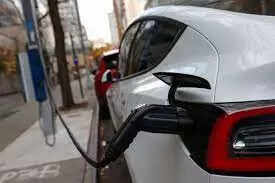
By David Shepardson
With a revamped $7,500 electric vehicle tax credit taking effect Jan. 1, the U.S. Treasury Department said on Monday it will delay until March its release of proposed guidance on the required sourcing of electric vehicle batteries.
The announcement means some electric vehicles that will not meet the new requirements may have a brief window of eligibility in 2023 before the battery rules take effect.
The $430 billion Inflation Reduction Act (IRA) imposes complex restrictions on tax credits based on sourcing of battery components and critical minerals. Signed by President Joe Biden in August, the law limits EV tax credits to vehicles assembled in North America and was partly aimed at weaning the United States off batteries from China, which now make up 70% of global supply.
But it only gave the Treasury Department until year end to iron out thorny questions about battery sourcing rules.
Some requirements for tax credits take immediate effect on Jan. 1 including new caps on income of buyers and retail prices for qualifying vehicles. But Treasury’s announcement Monday means some buyers could receive tax credits for purchases of electric vehicles that ultimately will not comply with battery sourcing rules when finally unveiled.
The Treasury guidance being delayed until sometime in March details requirements that make $3,750 contingent on at least 40% of the value of the critical minerals in the battery having been extracted or processed in the United States or a country with a U.S. free-trade agreement, or recycled in North America.
The other $3,750 requires that at least 50% of battery components were manufactured or assembled in North America. Both percentages rise annually.
Many countries are pressing Washington for a broad definition of a free-trade deal and other foreign automakers and countries want other interpretations
Treasury said that by Dec. 31 it will “release information on the anticipated direction” of the rules. It said “the critical mineral and battery component requirements take effect only after Treasury issues that proposed rule.”
General Motors Co and Tesla Inc vehicles again become eligible for EV tax credits on Jan. 1 after Congress in August lifted the per-manufacturer cap on EV tax incentives.
It remained unclear whether Treasury will address other questions by Dec. 31 including if it will allow automakers to take advantage of commercial clean vehicle credits by leasing vehicles to consumers.
Also Read:

